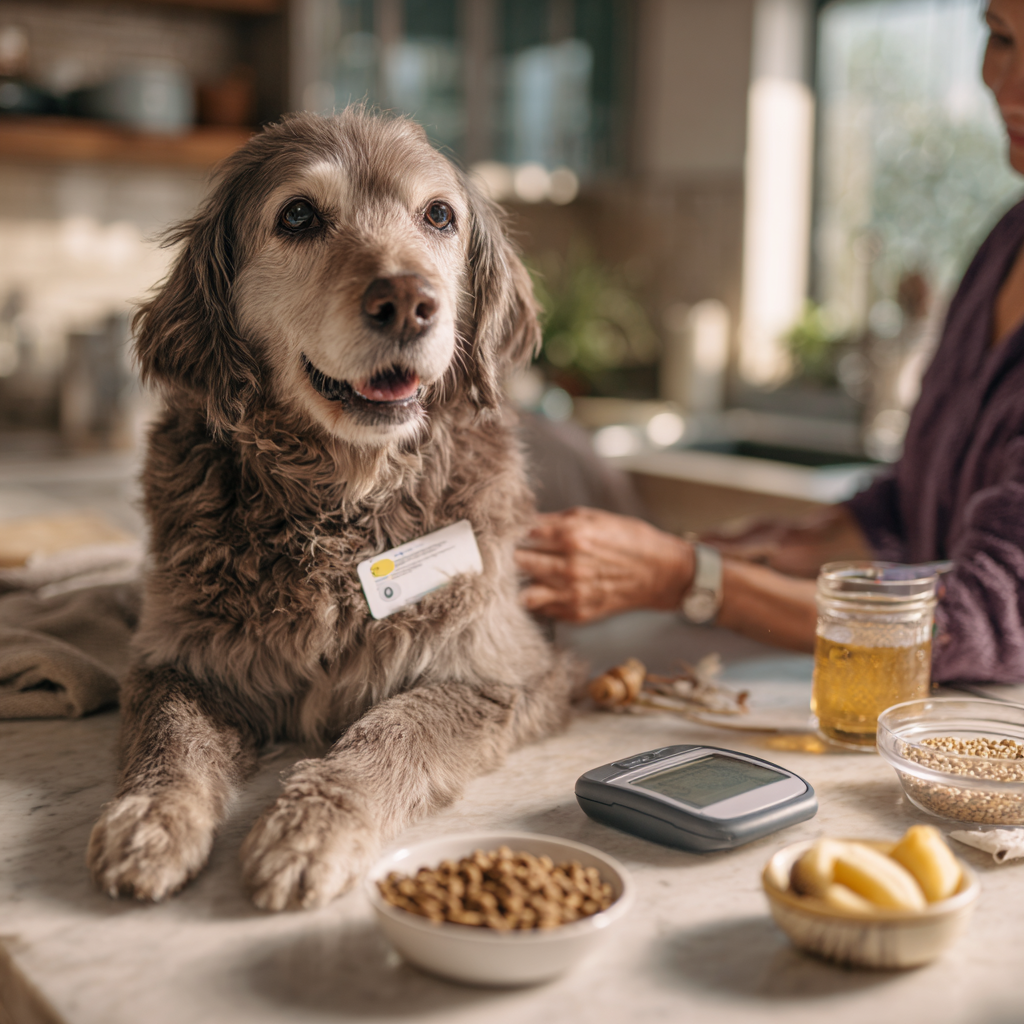
Preventing Hypoglycemia in Pet Diabetes: Tips, Symptoms & Fixes
Share
Although hypoglycemia can develop quickly, you’ll often see subtle neuroglycopenic and adrenergic signs first: mild lethargy, sudden weakness or ataxia, tremors, restlessness, dilated pupils, and heightened hunger or vocalization. These early symptoms reflect declining cerebral glucose and counterregulatory catecholamine release. You’ll notice behavioral changes first—disorientation, clinginess, or abrupt irritability—before overt collapse or seizures. In cats, quiet withdrawal may replace overt tremor; in dogs, pacing and food-seeking predominate. Monitor pupillary responses, gait, and mentation on a minute-to-minute basis. Validate suspicion with a rapid glucometer check and trend data. Prioritize continuous glucose monitoring where feasible to detect downward inflections before clinical decompensation.
Common Triggers: Insulin Errors, Missed Meals, and Extra Activity
When blood glucose drops in diabetic pets, you can almost always trace it to modifiable triggers: dosing mistakes, inadequate carbohydrate intake, or unplanned energy expenditure. Overshooting insulin dosage accelerates peripheral glucose uptake and suppresses hepatic gluconeogenesis, outpacing available substrate. Underdosing is less risky acutely, but stacking or confusing concentrations (U-40 vs U-100) precipitates sharp nadirs. Missed meals or disrupted meal timing reduce exogenous glucose, while delayed gastric emptying further blunts absorption. Extra activity increases skeletal muscle GLUT4-mediated uptake and glycogen demand, intensifying insulin action. Illness, heat, and estrus can amplify sensitivity. Use meters/CGM to correlate events with kinetics and prevent repeats.
Daily Routines to Keep Glucose Stable
Start by standardizing timing: feed measured meals and give insulin at consistent intervals to align exogenous insulin action with predictable nutrient absorption and hepatic glucose output. You’ll reduce counterregulatory swings by minimizing variability.
Design dietary adjustments that flatten postprandial peaks by prioritizing consistent carbohydrate intake, low-glycemic fibers, and adequate protein to slow gastric emptying. Pair meals with matched insulin onset to minimize the depth of the nadir.
Implement predictable exercise routines. Schedule moderate, same-duration activity when insulin effect is stable; avoid peak action to prevent accelerated glucose disposal. Use continuous glucose data, if available, to iteratively refine timing. Record food, dose, activity, and glucose; adjust one variable at a time.
Emergency Steps and At-Home Supplies to Have Ready
Because hypoglycemia can progress from adrenergic signs to neuroglycopenia within minutes, prepare an at‑home protocol and kit so you can intervene at the first symptom or low reading. Assemble emergency supplies: pet glucometer with control solution, lancets, ketone strips, stopwatch, digital thermometer, and premeasured glucose sources (40% dextrose gel, corn syrup, oral glucose tablets crushed for microdosing). Include small, high-glycemic snacks, syringes for buccal application, and a laminated flow chart. Stepwise: confirm glucose, deliver buccal dextrose (0.5–1 mL/kg), recheck in 10 minutes, repeat if <70 mg/dL, then feed—document dose-response trends. Prevent rebound hypoglycemia by resuming basal intake once stabilized.
When to Call the Veterinarian and What to Expect
Your at‑home protocol buys time, not indefinite safety; certain patterns warrant veterinary care. Call immediately if glucose <50 mg/dL, neurologic signs persist after dextrose, seizures occur, or hypoglycemia recurs within 24–48 hours. Also call for vomiting, ketone positivity, or missed insulin with lethargy. Robust veterinary communication accelerates triage.
Expect rapid glucose confirmation, electrolytes, hematocrit, beta‑hydroxybutyrate, and liver panel. The team may give IV dextrose, continuous rate infusion, glucagon microdosing, or adjust basal insulin. They’ll investigate drivers: insulin overdose, reduced intake, sepsis, Addison’s, hepatic disease, and insulinoma. Leave with a personalized emergency protocol, sensor‑guided thresholds, an insulin titration plan, and a follow‑up curve.
Conclusion
You’ve learned to spot hypoglycemia early, manage triggers, and steady glucose with consistent routines—so you can act before numbers nosedive. Think of your pet’s metabolism like a finely tuned thermostat: predictable inputs prevent abrupt chills. Keep emergency glucose on hand, recheck levels after treatment, and never skip insulin guidance. If confusion, seizures, or persistent readings under ~70 mg/dL occur, call your veterinarian promptly. With vigilance and precision, you’ll stabilize physiology and reduce risk of life‑threatening neuroglycopenia.
